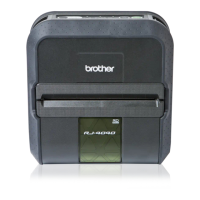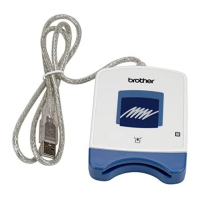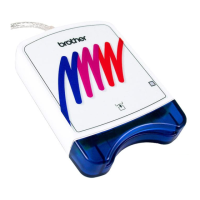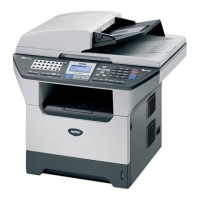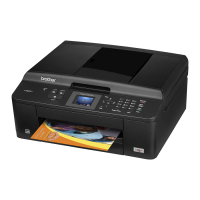Do you have a question about the Brother BES Lettering and is the answer not in the manual?
Overview of different areas in the workspace and their functions.
Displays design name, stitch/color count, and dimensions.
Accesses a menu of tools like New, Save, Print.
Contains frequently used tool buttons for quick access.
Customize design workspace, set measurement units.
Modify how the design is displayed, including zoom levels.
Use Zoom to enlarge or shrink parts of the design for detail.
Measure distances between points using the Ruler tool.
View and manage the embroidery hoop within the design window.
Choose from pre-loaded hoop sizes or create custom ones.
Access software assistance through contents, index, or search.
Create standard text items with normal proportions.
Create text that follows a set linear or curved path.
Create text that is oriented vertically.
Create text that follows a circular path.
Create three-letter monogram text, with optional decorative elements.
Methods for modifying text size, shape, and appearance.
Manually change the overall size of a text segment.
Modify the shape of text segments by adjusting corner handles.
Adjust the shape of text segments using flexible bounding box handles.
Change the angle of a text segment using the rotation handle.
Modify the angle of letters within a text segment.
Modify properties of individual letters within a text segment.
Manually adjust the horizontal spacing between letters.
Manage thread colors for text segments.
Modify the thread color of existing text segments.
Insert special characters to divide text into sub-segments of different colors.
Central panel for modifying all text object properties.
Modify text content, font, height, alignment, and spacing.
Edit the text content directly within the Properties panel.
Modify the font type of selected text segments.
Check spelling of text segments using integrated spell-check functionality.
Adjust the angle of letters to create a slanted effect.
Unique properties for specific text frame types.
Add pre-designed embroidery frames to monogram text.
Apply different embroidery styles like Run, Steil, Appliqué, or Spiral to lettering.
Use fabric pieces for large letters, reducing stitch count.
Customize satin stitch parameters for appliqué.
Customize parameters used when generating fill stitching for a segment.
Select from standard or carved patterns for fill stitching.
Adjust the distance between embroidery stitches for fill density.
Configure underlay stitches for fabric stabilization.
Choose underlay types like Contour, Parallel, or Zig-Zag for fabric stabilization.
Adjust pull compensation to compensate for fabric stretching during sewing.
Enter special characters using ASCII codes or keyboard shortcuts.
Start new designs using default or custom recipe and machine formats.
Load and manage embroidery files.
Load existing embroidery files from various formats.
Save current designs or alternative versions with different names or formats.
Select and modify individual design components or groups.
Primary tool for selecting and manipulating design elements.
Use clipboard functions to duplicate or move design elements.
Use alignment tools to arrange components precisely.
Rotate design elements by 90-degree increments or custom angles.
Import and combine multiple design files into an active design.
Apply distortion effects like Wave, ZigZag, or Twirl to design segments.
Create multiple similar designs by replacing template elements.
Reorder embroidery segments for optimal stitch sequence.
Rebuild designs to minimize color stops by combining similar colors.
Generate print-outs of designs with various information options.
View design worksheets on screen before printing.
Customize print options like margins, size, and color analysis.
Displays available keystrokes and recommended heights for the Greek font.
Shows keystrokes and height recommendations for the Greek Block font.
Presents keystrokes and height guidance for the Greek Mixed font.


